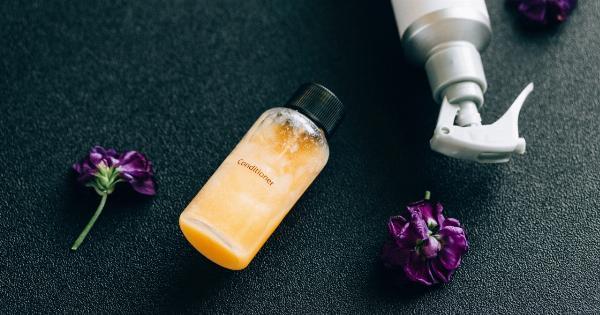Many of us love to experiment with our hair, whether it’s changing the color or straightening those stubborn curls. Hair coloring and straightening have become hugely popular trends, allowing us to transform our looks effortlessly.
However, what many people fail to recognize are the hidden dangers associated with these hair treatments. While they may enhance our appearance, the long-term implications on our hair and overall health can be quite concerning.
The Chemical Conundrum: Hair Coloring
Hair coloring involves the use of various chemical compounds to modify the pigmentation of our hair. While this process can result in stunning transformations, it’s important to be aware of the potential adverse effects.
1. Hair Damage: The chemicals used in hair dyes, such as ammonia and peroxide, can cause significant damage to the hair shaft. They strip away the natural oils, leaving the hair dry, brittle, and more prone to breakage.
2. Allergic Reactions: Some individuals may experience allergic reactions to hair color, especially if they have sensitive skin. These reactions can manifest as skin rashes, itching, and even severe swelling.
3. Chemical Burns: If hair color comes into contact with the scalp, it can cause chemical burns. This can lead to redness, soreness, and even blisters, requiring medical attention.
4. Hair Thinning and Hair Loss: Prolonged and frequent use of hair dye can weaken the hair follicles, resulting in hair thinning and, in severe cases, hair loss.
The chemicals interfere with the natural growth cycle of the hair, leading to long-term damage.
Straightening Struggles: The Perils of Hair Straightening
Hair straightening procedures, such as chemical relaxers and heat styling, offer a temporary solution for those craving sleek, straight locks. However, it’s crucial to understand the potential risks involved.
1. Chemical Damage: Chemical relaxants used in straightening treatments can cause severe damage to the hair structure. They break down the protein bonds in the hair, making it weak, brittle, and prone to damage.
2. Scalp Irritation: The chemicals used in hair straightening treatments can irritate the sensitive scalp, leading to redness, itching, and discomfort. In some cases, this irritation can also cause dandruff or other scalp conditions.
3. Heat Damage: Using excessive heat for hair straightening purposes can cause heat damage, resulting in split ends, breakage, and frizz.
Heat styling tools, such as straightening irons and blow dryers, can gradually weaken the hair, leaving it vulnerable to damage.
4. Permanent Hair Texture Changes: In some cases, hair straightening treatments can permanently alter the natural texture of the hair.
This means that the hair may not return to its original state even after the treatment is discontinued.
Precautions and Protective Measures
Although there are risks associated with hair coloring and straightening, there are steps you can take to minimize the potential damage. Here are some precautions and protective measures you should consider:.
1. Consult a Professional: It’s essential to consult a professional hairdresser or stylist before undergoing any hair coloring or straightening procedures.
They can assess your hair’s condition and recommend the safest options.
2. Patch Test: Conduct a patch test before applying any hair dye to check for potential allergic reactions. Apply a small amount of the dye to the skin behind your ear and wait for at least 48 hours to see if any adverse reactions occur.
3. Limit Frequency: Try to limit the frequency of hair coloring and straightening treatments to reduce long-term damage.
Give your hair enough time to recover between treatments and consider alternate styling options that put less stress on your hair.
4. Opt for Natural Alternatives: Consider using natural or semi-natural hair coloring options like henna or vegetable dyes. These are usually gentler on the hair and contain fewer harmful chemicals.
5. Protective Styling: Use heat protectant sprays or serums before subjecting your hair to heat styling tools. Additionally, avoid using high heat settings and limit the frequency of heat styling to prevent extensive damage.
The Importance of Hair Care and Maintenance
Regardless of whether you choose to color or straighten your hair, proper hair care and maintenance are essential to mitigate any potential damage.
1. Moisturize: Regularly moisturize your hair using deep conditioning treatments or natural oils. This helps to restore moisture lost during chemical treatments and prevents dryness and breakage.
2. Avoid Over-Washing: Excessive washing can strip away the natural oils from the hair, leading to dryness and damage. Opt for a gentle shampoo and try to limit washing to every two or three days.
3. Trim Regularly: Regular trims help to get rid of split ends and prevent further breakage. Aim for a trim every six to eight weeks to maintain healthy hair.
4. Use Gentle Hair Products: Choose hair care products specifically formulated for colored or chemically treated hair. These products often contain ingredients that help to preserve color and protect the hair from further damage.
Conclusion
Hair coloring and straightening can offer exciting transformations, yet it’s crucial to consider the hidden dangers associated with these treatments.
The chemical compounds used can wreak havoc on your hair’s health and integrity, leading to dryness, breakage, and even hair loss. Furthermore, the scalp and overall health may also be at risk due to potential allergic reactions and chemical burns.
By taking precautions, opting for safer alternatives, and adopting proper hair care practices, you can enjoy the benefits of hair coloring and straightening while minimizing the risks involved. Always prioritize the health and well-being of your hair, because true beauty stems from healthy, nourished locks.





























